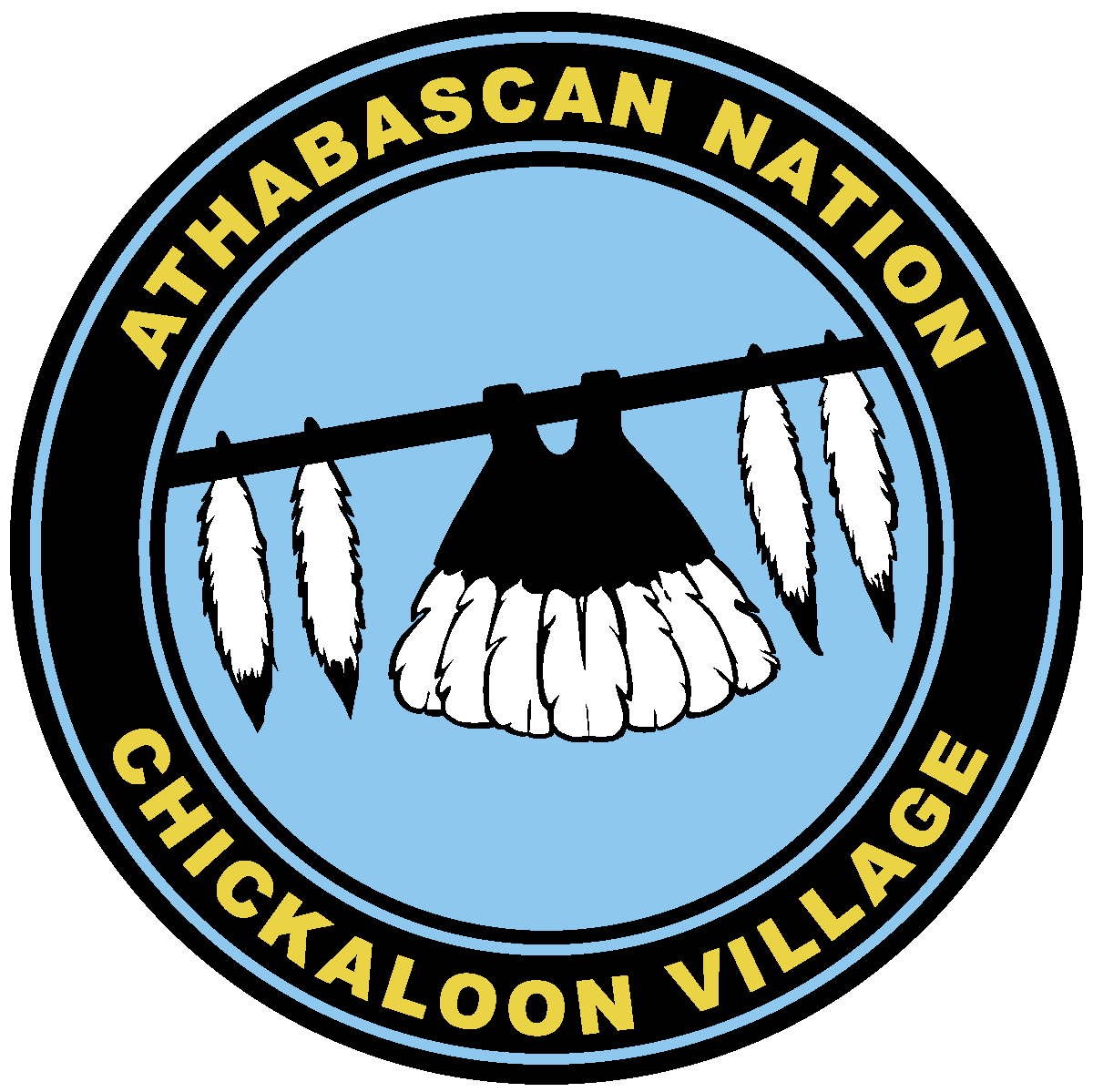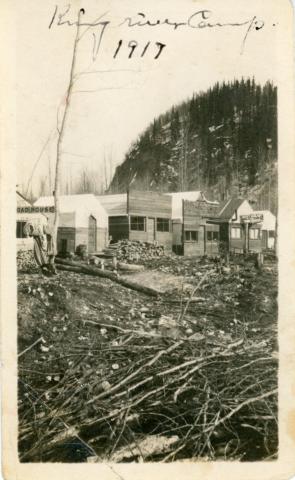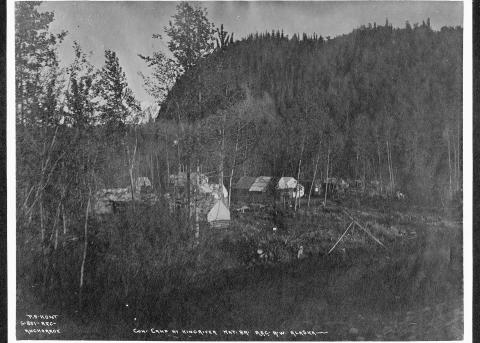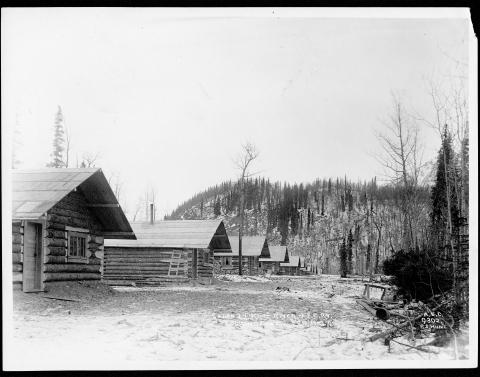King River Camp, 1917
Print Photograph, 2 5/8 in. x 4 1/4 in.
Handwritten inscription in ink, "King River Camp, 1917."
The Matanuska watershed is a culturally significant place for the Ahtna Dene. It was once a bountiful region where the Ahtna could harvest salmon, moose, and sheep, and served as a meeting place where the Ahtna intersected with the Dena'ina. Elder Alberta Stephan recounted that the ancestral trail system near Chickaloon River was used by so many Ahtna going past Chickaloon that the trail was three feet deep. The Nelchina gold rush of 1913 increased the number of travelers through the Matanuska Valley and expanded the ancestral Nay'dini'aa Na' Kayax trail. Starting in 1917, a federally funded railroad was constructed following our Tribe’s ancestral trail system, parallel to the Matanuska River for forty miles. The railroad and associated railroad stations, railroad spurs, coal mines (some were federally funded), and subsequent communities that developed along the railroad all contributed to the loss of irretrievable cultural resources, sites, and cultural knowledge. At least two Tribal village sites and many miles of the Nay'dini'aa Na' Kayax ancestral trail system were in the path of the railroad and were destroyed by 1925, along with several traditional salmon spawning grounds. By 1930, much of the railroad in the Matanuska Watershed was abandoned.








